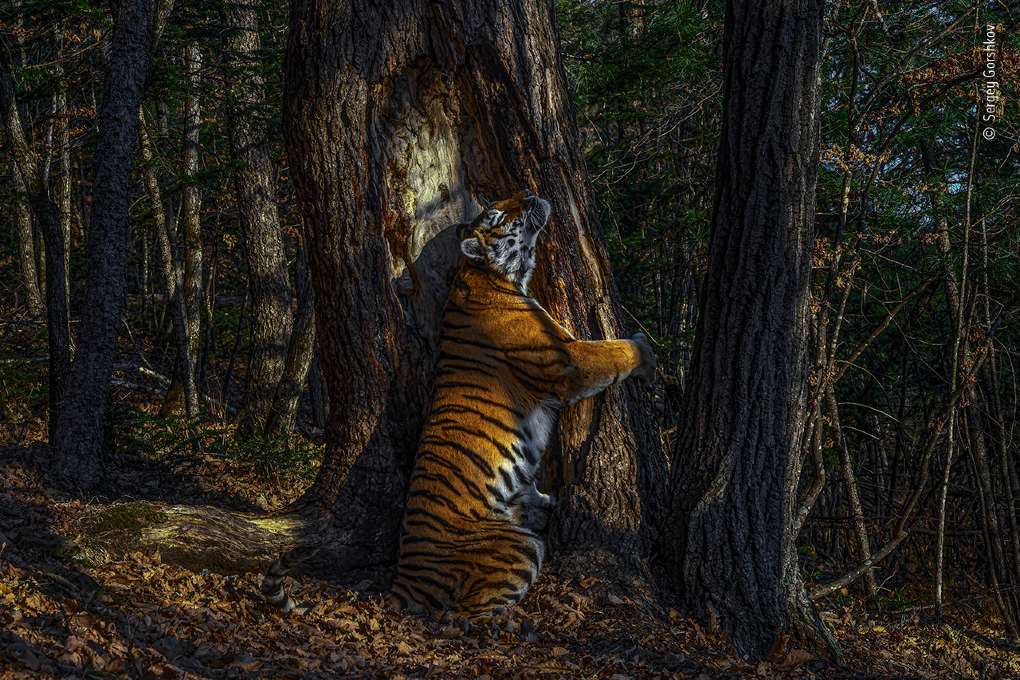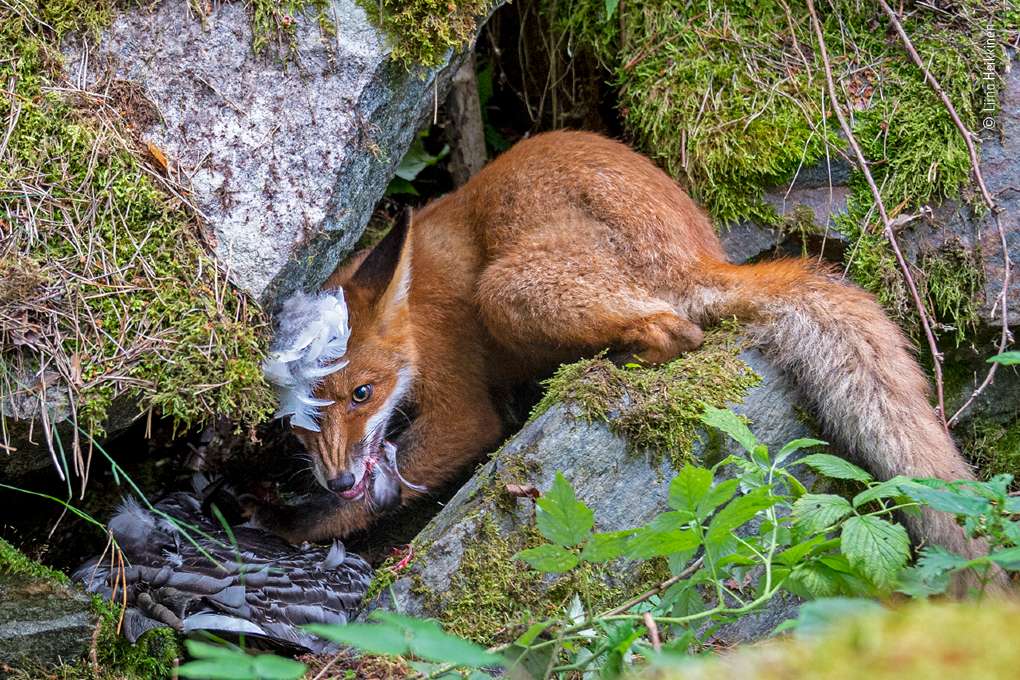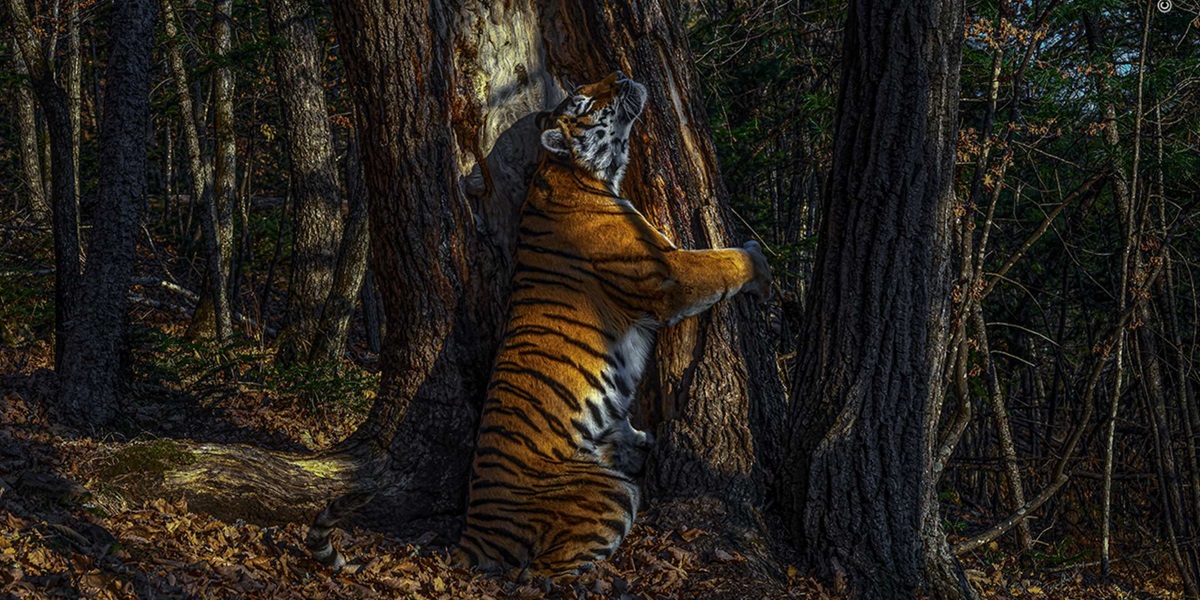Through the unique emotive power of photography, we are reminded of the beauty of the natural world and our shared responsibility to protect it.

The Embrace
Sergey Gorshkov, Russia
Adult Grand Title Winner
Sergey scoured the forest for signs of Amur, or Siberian, tigers, searching for the best place to set up his camera trap. He knew his chance of photographing one was slim, but his mind was made up. ‘From then on, I could think of nothing else,’ Sergey says. After 10 months, his dedication paid off: he captured a rare glimpse of this magnificent tiger in its wild habitat.
These solitary cats exchange vital information, such as the need for mates, by leaving scent, hairs, urine and other markers on prominent spots, including tree trunks. In the far east of Russia, a population of around 500 Amur tigers persists, occupying a fragment of its former land. Under threat from habitat loss and poaching, these tigers are close to extinction.
Technical specification: Nikon Z7, 50mm f1.8 lens, 1/200 sec at f6.3, ISO 250, Cognisys camera-trap system

The Fox that got the Goose
Liina Heikkinen, Finland
Young Grand Title Winner
Liina and her father spent the day at a fox hotspot on one of Helsinki’s islands. She watched as two adults came and went, delivering food to their ever-alert and relentlessly hungry cubs. When one brought home a barnacle goose, the cubs began to fight over it excitedly. Liina followed the ‘winner’ as it retreated to devour its prize.
Foxes are born in the spring and are similar to adult size by summer. At around four weeks old, they start to hunt insects and earthworms, but that isn’t enough to sustain them, so their parents provide mammals and birds. Foxes’ diets vary depending on their home: crabs, rabbits, fruit, birds and household waste are all potential food options.
Technical specification: Nikon D4, 28-300mm f3.5-5.6 lens, 1/125 sec at f5.6 (-0.3 e/v), ISO 1600
Wildlife Photographer of the Year is developed and produced by the Natural History Museum, London.
